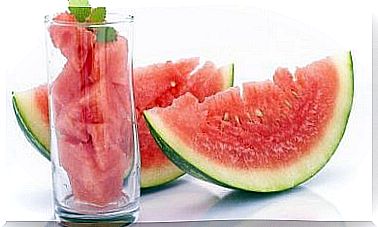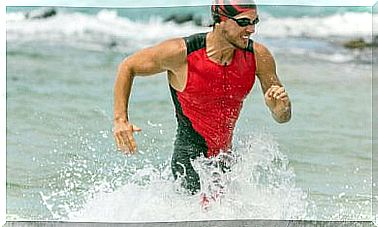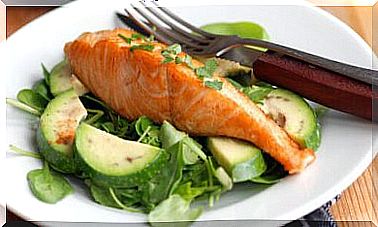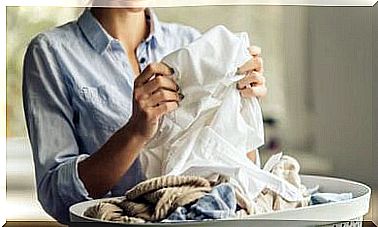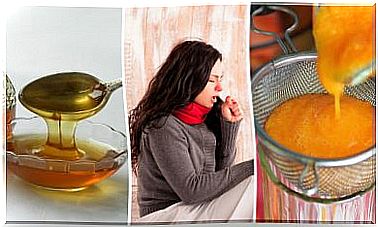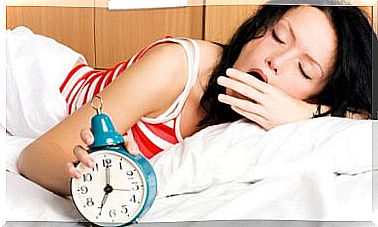7 Home And Natural Remedies To Treat Athlete’s Foot
In addition to maintaining proper hygiene and avoiding humidity in the area, to treat athlete’s foot you can take advantage of the antifungal properties of some natural ingredients. Discover them!
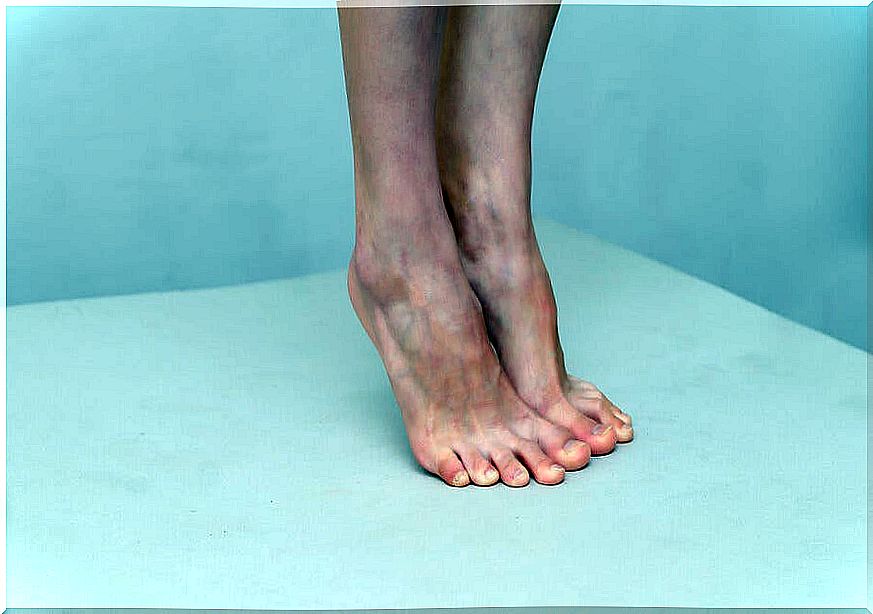
Athlete’s foot is an infection that occurs due to a fungus. It thrives in somewhat opposite environments: in either very hot or very humid locations.
Do you know how to recognize it? Do you know its treatment? In this article we will address its main causes and symptoms. Also, we reveal some natural remedies that help fight it.
What are the causes of athlete’s foot?
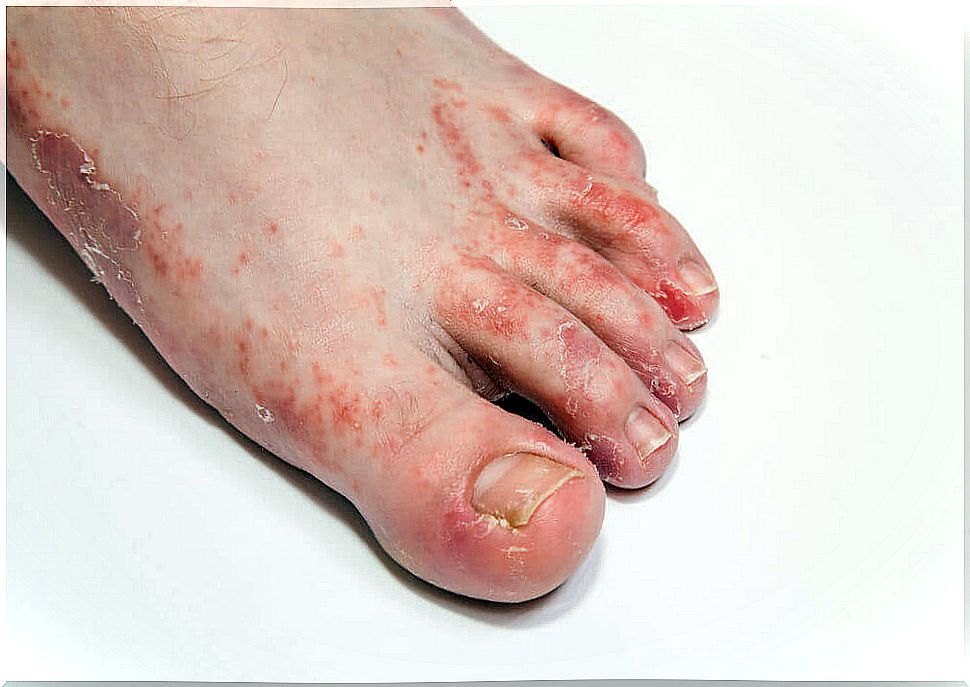
According to information compiled in the National Center for Biotechnology Information , athlete’s foot is caused by the infection of dermatophyte fungi. These can reach the skin through small cracks or wounds in its upper layer.
Because the feet usually have a humid and warm environment, these fungi manage to proliferate. In turn, you are more likely to get the infection due to the following factors:
- Moisture in the feet for long periods of time.
- Excessive perspiration
- Not drying well.
- Minor skin injuries.
- Immune deficiencies.
- Wear socks or stockings that are not cotton, or closed plastic shoes, in which the feet are not adequately ventilated.
To make matters worse, it is highly contagious on contact: from toe to toe, from foot to foot, with shower floors, with the shoe, to name a few. Therefore, once detected, it must be efficiently neutralized and its spread prevented.
What are the symptoms of athlete’s foot?
Athlete’s foot symptoms can manifest in one form or another, depending on the severity of the infection. It can often cause:
- Bad smell.
- A red, scaly skin rash.
- Pain when fingers are extended.
- Blisters that ooze fluid or crust over.
- Dry skin.
- Burning and itching
Natural remedies to combat athlete’s foot
Athlete’s foot is a fungal infection, therefore your first-line treatment is usually prescription or over-the-counter antifungal products. Information published in the Cochrane Library highlights that antifungals are used twice a day, for about 4 weeks, to fight this infection.
However, in some people the treatment must be extended or repeated, since there is a risk of reinfection. On the other hand, it is advisable to keep your feet dry, wear ventilated shoes and avoid going barefoot in swimming pools and public places.
Now, there are also a number of home remedies available that can serve as adjuvants against this infection. Although the evidence for their effectiveness is limited, they are generally safe to use and, according to popular culture, work well.
1. Vinegar
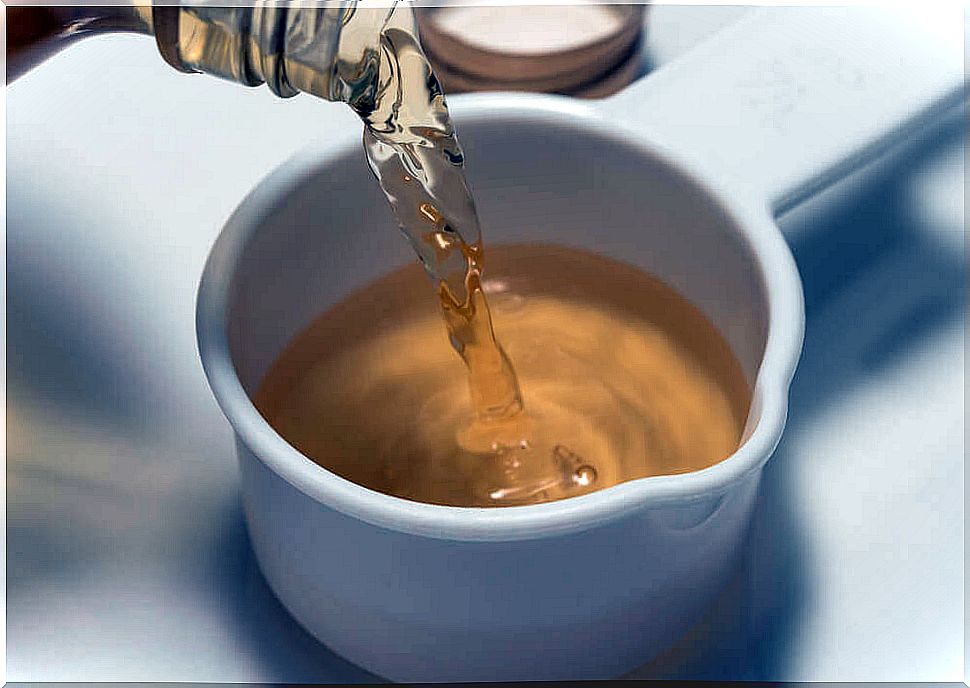
Vinegar baths are one of the popular athlete’s foot remedies. According to a study published in Medscape General Medicine , it has anti-infective properties. However, there is no evidence on its effectiveness against athlete’s foot.
In any case, it is a remedy that, used in moderation, seems to relieve symptoms such as itching. If you want to try it at home, write down the following instructions.
Ingredients
- 2 tablespoons of vinegar (30 ml)
- 3 cups of water (750 ml)
Preparation
- To start, mix the vinegar with warm water in a bucket.
- Introduce the feet and keep them soaked for 15 minutes.
- When finished, dry them very well. Repeat this process twice a day.
2. Salt
Another remedy that may help calm athlete’s foot is nothing more and nothing less than salt. As in the previous case, you can use it through bathrooms.
Ingredients
- 6 tablespoons of salt (60 g)
- 4 cups of water (1 liter)
Preparation
- To start, add the salt in a bucket of water. Then dip your feet.
- Finally, after 15 or 20 minutes, dry them well.
- Repeat this process for 15 days.
3. Baking soda
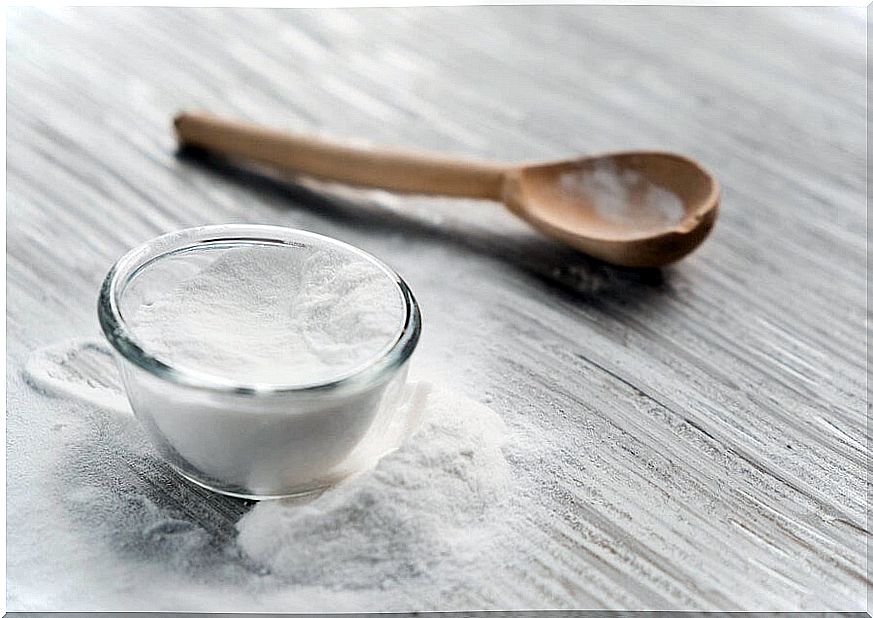
In popular literature, ingredients like baking soda have been used as adjuvants for problems like foot fungus. While research to support this is lacking, a study published in the journal Mycopathologia found that this ingredient has antifungal activity when used on the skin.
In any case, as more research is necessary, you should use it with caution. In case of noticing an unfavorable reaction, it will be necessary to suspend its use and rinse with plenty of water.
Ingredients
- 2 tablespoons of baking soda (20 g)
- Water (as necessary)
Preparation
- To start, you have to mix the baking soda with a little water. The idea is to make a thick paste. Thus, depending on the amount that is needed, more water or more bicarbonate is added.
- Finally, massage the affected area with the paste and let it act. After 20 minutes, rinse.
4. Onion juice
The onion has antifungal properties that, it seems, can help in the treatment of athlete’s foot. In research published in the journal Phytotherapy, it was determined that this ingredient, like garlic, has promising effects in the treatment of fungal diseases such as those caused by dermatophytes.
As in the previous case, evidence is lacking to confirm its safety and efficacy. Therefore, in case of noticing any unwanted effect, it is better to suspend its use.
Ingredients
- 1 or 2 onions
Preparation
- To start, process the onions until the juice is obtained.
- Then, with the help of a cotton ball, apply the juice to the infected area (after having cleaned it with an antifungal product).
- Finally, clean it and protect it with talcum powder to avoid moisture residues.
5. Tea
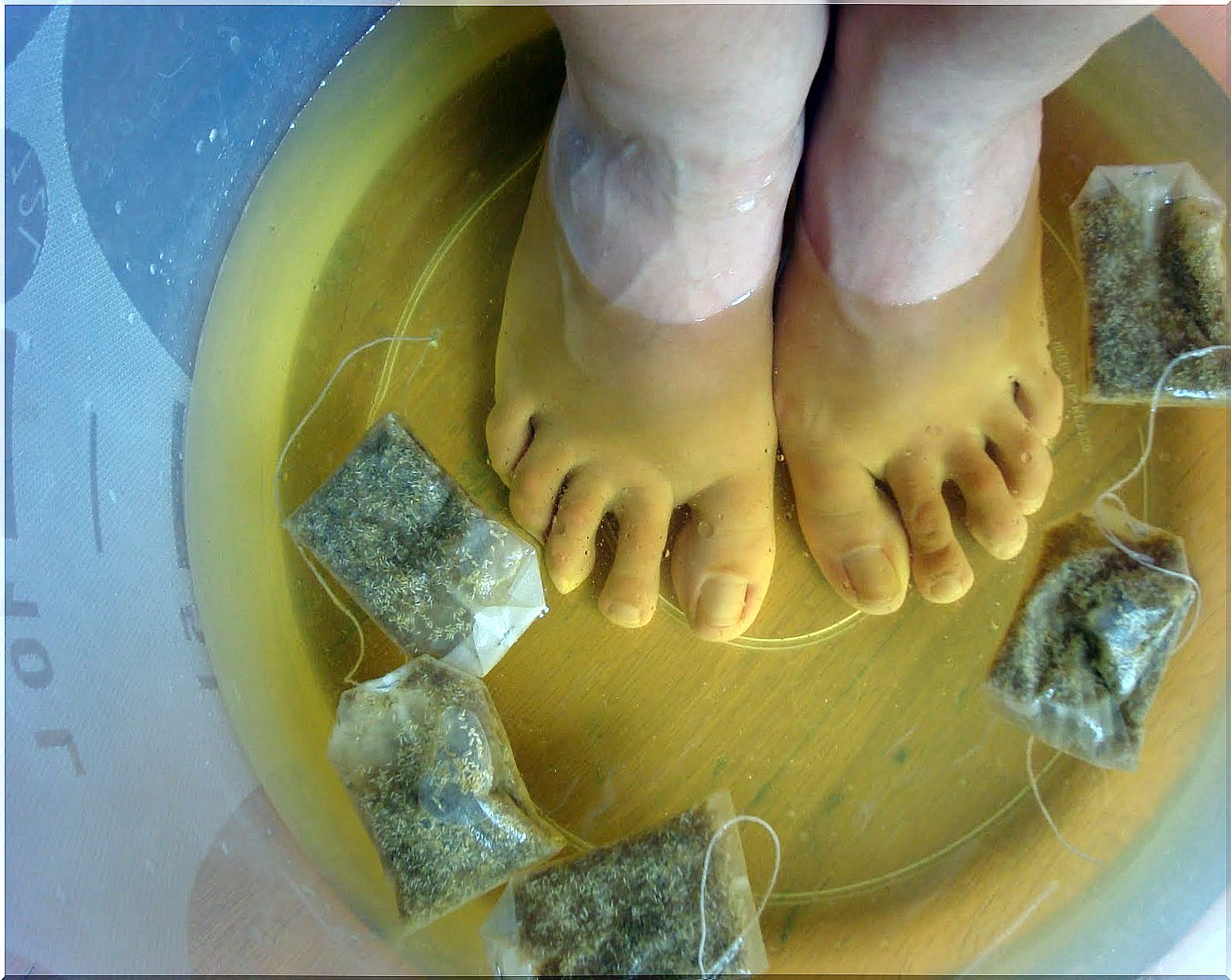
Tea bag baths have a calming effect against symptoms such as itching and irritation caused by athlete’s foot. It is said that it also helps against fungi, but there is no evidence.
Ingredients
- 2 cups of water (500 ml)
- 6 teaspoons (60 g) or 6 sachets
Preparation
- To start, heat the water and, when it comes to a boil, add the tea and let it infuse for 15 minutes.
- After the indicated time, remove from the heat and wait for it to warm up.
- Finally, once cold, filter and wash the feet with the liquid.
- The process should be repeated for a month.
7. Natural yogurt
Yogurt has multiple properties. In this case, its live bacteria, also known as probiotics, appear to help stop athlete’s foot fungus from spreading further, according to findings shared in Frontiers in Microbiology.
Preparation
- First, put some plain yogurt on the affected area and let it dry.
- When finished, remove it carefully with a clean cloth and make sure that the foot is completely dry.
8. Hygiene
Last but not least, it is important to review hygiene habits. It is good to keep in mind that these are decisive to control the infection.
- To start with, wear clean, dry socks.
- During the shower, wash your feet with soap and water, and then dry them thoroughly.
- Wear sandals on the floors of showers and public pools.
- Put antifungal powders (such as talcum powder) on the feet to prevent moisture from forming.
- Finally, wear shoes made of natural materials, such as leather, and alternate several shoes.
Medical treatment is important
The remedies discussed are not miraculous and can be ineffective in many cases. Its effects are often achieved after several long-term applications. On the other hand, they are not a substitute for medical treatment. If the professional requires it, they can be used as a complement.
